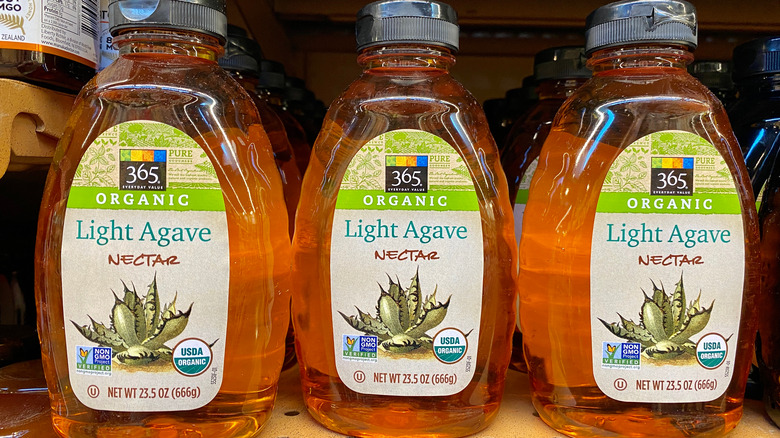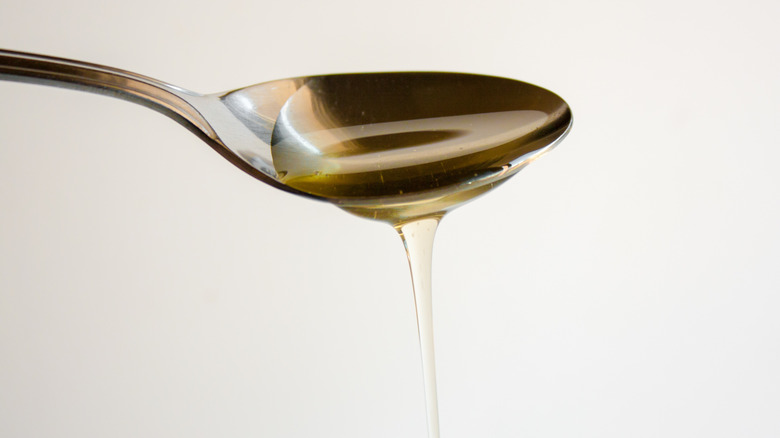Is Agave Nectar Actually Good For You?
Agave nectar is a sweetener that is marketed as a healthier alternative to sugar. Agave nectar comes from the agave plant found in the Southern United States and Latin America. It was traditionally thought to have healing properties, but the agave nectar sold in grocery stores today is highly refined and processed (via Healthline). This product is made by extracting the sap from the agave plant before processing it into a syrup. However, during the processing, the fructans are taken out and broken down into fructose. This removes virtually all of the health properties of the pure agave sap.
One of the reasons agave syrup is so popular is that it has a low glycemic index (GI). Foods with a higher GI tend to raise blood sugar levels. Agave nectar does not spike blood sugar levels like many other sweeteners, which is why it has been marketed as a healthier sugar option. However, GI levels play a small part in how healthy or unhealthy a type of sugar is.
Fructose is the real danger of agave nectar
According to Verywell Health, the fructose in agave nectar is a cause for concern. Fructose is metabolized in the liver and turned into triglycerides. This type of fat can get trapped in the body and cause chronic diseases like fatty liver disease, insulin resistance, metabolic syndrome, obesity, and type 2 diabetes.
Although agave nectar has a low glycemic index, it is still a type of added sugar. It is recommended that you limit your intake of all added sugars when possible. If you must use sugar, try to use pure honey or maple syrup, which still contain some nutrients. You can also choose alternatives that contain few or no calories like stevia or monk fruit. If you need to add sugar to a recipe, you may be able to substitute the sugar with real alternatives like applesauce or mashed bananas. Of course, you can enjoy all added sweeteners, including agave nectar, in moderation.


